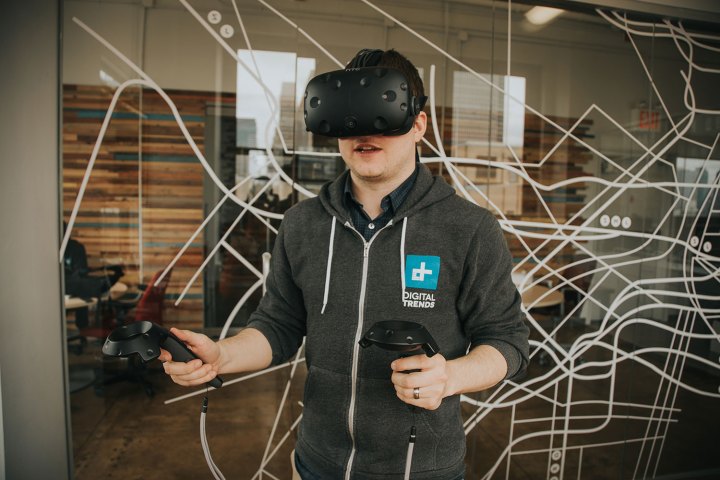
The Nvidia FCAT tool has been around for a while now, offering users an insight into aspects such as frame pacing and micro-stuttering to help determine the consistency of the gameplay experience, which can’t always be quantified in a score or average frame rate. That deeper look at how a game might perform is what Nvidia is hoping to offer to consumers with the FCAT VR tool.
Much like its non-VR predecessor, FCAT VR is analyzing frame data at a low level. That means that it can measure the time it takes for a frame to be rendered, how often frames are dropped for being rendered too slowly, and how well native reprojection within the headset is operating. All of that information is much more important within VR, as it can tell you just how smooth the gameplay experience is. That’s better than just letting you know the average is hitting the 90FPS minimum required for consumer-grade VR headsets like the HTC Vive or Oculus Rift.
While this sort of data was technically available as part of the original FCAT release, what Nvidia has done with its latest rendition is make it more easily accessible. There’s a new UI to play with and a new results screen that spits out stats and graphs in an easy-to-read manner. There’s even an in-game VR overlay that lets users wearing the headset have a better idea of how the system is performing on the fly, according to RoadtoVR.
This is all very useful for those looking to tune their systems for virtual reality gaming. While it may not be too difficult to reach the 90 FPS minimum, especially when using safety net features like reprojection, space warp and time warp, not every user wants to make use of those features.
Knowing how often your otherwise-capable system makes use of them is important and something Nvidia hopes will help separate its benchmarking tool from the alternatives.
FCAT VR will become available for general use in mid-March.




